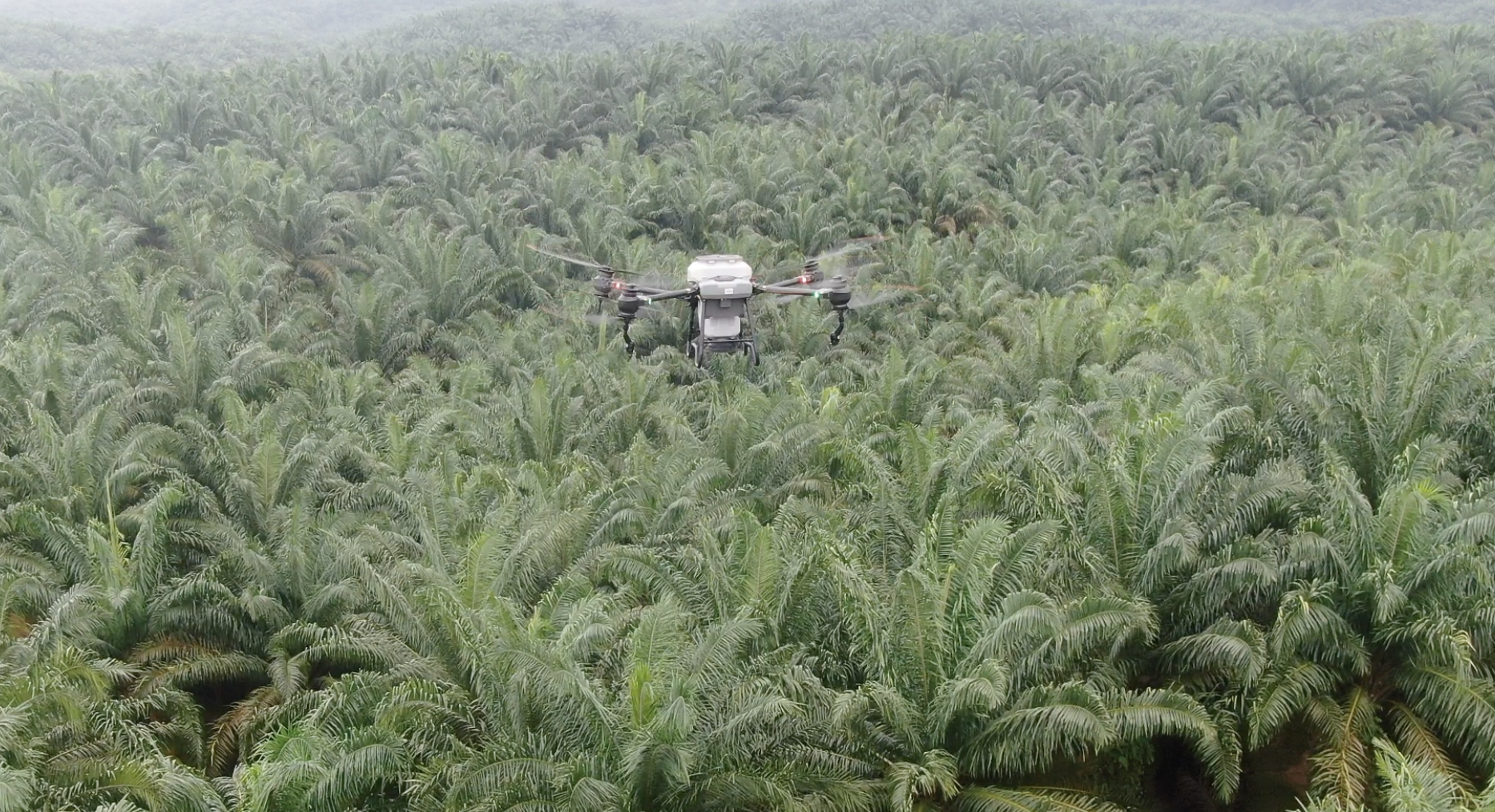Agricultural drones have become essential tools in precision farming. Among the latest and most capable is the DJI Agras T40, a drone specifically designed to handle large-scale spraying and fertilizing with greater accuracy and efficiency.
Unlike earlier models, the T40 combines powerful hardware with intelligent software, allowing growers to manage input application more efficiently than ever before.
What is the DJI Agras T40?
The DJI Agras T40 is a coaxial twin-rotor drone designed for agricultural operations such as liquid spraying, granular spreading, and terrain mapping. It supports a 40-liter spray tank and can carry up to 50 kilograms of granular material, making it one of the most capable drones in its class.
Built to handle tough terrain and heavy loads, it offers a complete solution for farms that demand speed, precision, and data-driven planning.
How It Works in the Field
Spraying Function
With a tank capacity of 40L, the T40 is built to cover large areas quickly. It uses dual atomizing nozzles that break down liquid into fine droplets, improving plant coverage while minimizing waste and drift.
Imagine a drone flying just above the canopy of a crop—its onboard radar keeps it at a consistent height. At each pass, it sprays evenly and accurately, guided by intelligent flight paths pre-programmed through DJI software. The result? Uniform spraying even on sloped or uneven terrain.
Depending on the settings, the T40 can spray between 12 to 21 hectares per hour—drastically reducing the time needed for pest and nutrient applications.
Spreading Function
The spreader attachment converts the T40 into a powerful tool for applying granular fertilizers, seeds, or even animal feed. With a 50kg payload, it can cover up to 1.5 tons of fertilizer per hour.
The system controls the flow rate and spread width precisely, which is especially useful for crops that need variable rate fertilization. The design prevents clogs and ensures uniform coverage, even when spreading lightweight material.

Intelligent Features That Improve Productivity
Phased Array Radar + Binocular Vision
This system allows the drone to detect and avoid obstacles in real time. Whether it’s a tree, pole, or sudden terrain elevation, the T40 adjusts its path automatically, reducing the risk of crashes and damage.
Terrain Following System
Thanks to its onboard radar, the drone can follow ground contours, maintaining a stable height over hills, terraces, or low-lying areas. This ensures spraying or spreading is consistent across the entire field, not just flat ground.
Multi-Spectral Compatibility
The DJI Agras T40 can be paired with a multispectral camera or connected with DJI Terra software. This allows farmers to gather vegetation health data, plan targeted spraying, and analyze field performance over time.
Operational Benefits in the Field
1. Time-Sensitive Application
When pest or disease outbreaks occur, speed is critical. The DJI Agras T40 can be deployed within minutes and reach problem areas faster than ground equipment, ensuring timely intervention before damage spreads.
2. Minimal Crop Disturbance
Unlike tractors or sprayers that drive through fields and risk damaging crops or compacting the soil, the T40 operates from the air. This preserves row integrity and reduces the physical impact on growing plants.
3. Night Spraying Capability
With built-in high-lumen searchlights, the T40 supports night spraying missions—allowing work to continue during cooler hours or when wind conditions are more favorable. This is especially useful for temperature-sensitive pesticides or fungicides.
Challenges You Should Be Aware Of
1. Learning Curve for Route Planning
The drone is intelligent, but to make full use of its efficiency, operators must learn how to set optimal spray paths, especially in irregular or fragmented fields.
2. Battery & Charging Logistics
While batteries are swappable, managing battery cycles, field charging stations, and downtime between flights is an important part of scaling up efficiently.
3. Payload Balancing for Dual Tasks
If switching frequently between spraying and spreading, operators must carefully configure the drone’s center of gravity and flight settings, which may differ slightly depending on load type.
4. Software Updates and Calibration
Regular firmware updates are critical to maintain accuracy and avoid bugs. Operators must also recalibrate the drone and spray system after long storage or between different chemicals.
When is the DJI Agras T40 Most Useful?
– During peak disease windows when traditional spraying methods can’t keep up.
– On steep terrains or areas with wet, soft soil that machinery can’t safely access.
– For variable rate application after drone mapping reveals inconsistent crop growth.
– In regions where labor shortages make seasonal spraying difficult or expensive.
Need help getting started?
Terra Agri team in Indonesia and Malaysia offers professional drone spraying and fertilizing services using the DJI Agras T40. Whether you’re managing large fields or testing precision agriculture for the first time, our team is ready to support your operations with the right tools and expertise.
Frequently Asked Questions (FAQ) about DJI Agrast T40 and Terra Agri
The Agras T40 is built for high-volume spraying and spreading. Its dual atomized spray nozzles and larger payload (up to 40L liquid / 50kg solid) allow it to handle real-world field demands. Whether it’s spraying on rice, oil palm, or fruit crops.
With proper battery management and route planning, a T40 can spray over 50 hectares in one day. Terra Agri’s operations often deploy multiple units and trained teams to cover large plantation blocks efficiently.
Yes, it supports both liquid spraying and solid spreading. With a quick module change, the same drone can be used for applying herbicides, insecticides, or dry fertilizers, all with precision. This makes it ideal for integrated crop management.
Absolutely. The DJI Agras T40 performs well in diverse terrains, including uneven or soft ground where tractors may struggle. Terra Agri uses T40 drones across various crops in Malaysia, adapting flight height and spraying volume to match local farming conditions.
Yes! Owning the drone isn’t your only option. Terra Agri provides drone spraying and fertilizing services using DJI Agras T40 units. Whether you’re testing drone efficiency or scaling your operations, we can handle the job with trained pilots and equipment.

